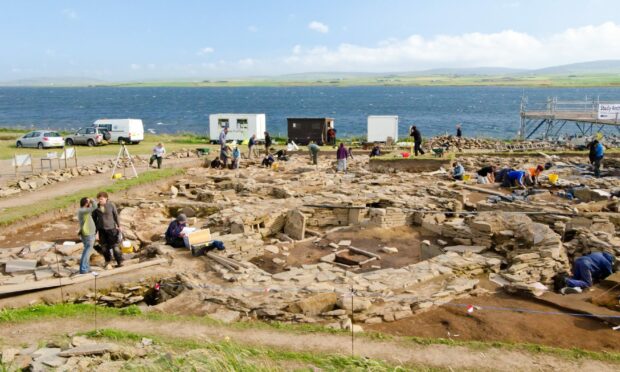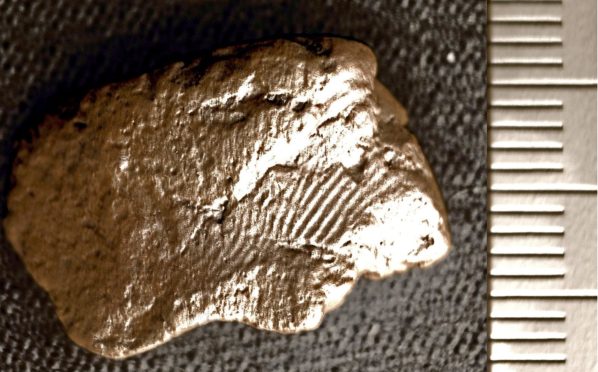Archaeologists from the University of the Highlands and Islands have begun excavating two important sites in Orkney for the first time since 2019.
Excavations at Ness of Brodgar and Skaill Farmstead on Rousay were put on hold during the coronavirus lockdown last year, and groups from the university’s Archaeology Institute are only now able to restart their work.
Ness of Brodgar – one of the UK’s most famous sites, which the UHI institute considers its “flagship” – proved productive even when no dig was taking place last year.
During post-excavation work on clay discovered on the site, archaeologists found an impression from a Neolithic textile which had pressed against the material when it was wet around 5,000 years ago.
And this April, a 5,000-year-old fingerprint was also found on a pot shard recovered from the site.
More treasures could be discovered at Ness of Brodgar from the end of this month, when a seven-week excavation will begin – albeit on a scale much reduced from normal.
The team working there will be small, and only a few of the Neolithic structures will be uncovered.
The dig will be open to the public between June 30 and August 11, but a one-way system will be in operation and no tours will take place.
Uncovering secrets on Rousay
Work will resume at the Skaill Farmstead on July 5, and will run on weekdays until July 16 with visitors welcome between 10am and 4pm.
During the last excavation on the site in 2019, the team uncovered a large Norse hall, possibly more than 1,000 years old, beneath more recent structures.
When they return next month, they will be focusing on a structure named The Wirk, which has been interpreted as a Norse castle in the 1100s, a defensive church tower and a 16th Century tower and range.
The Archaeology Institute said no excavations would be carried out this year at The Cairns site on South Ronaldsay, which dates to the Iron Age, but post-excavation work would continue.

